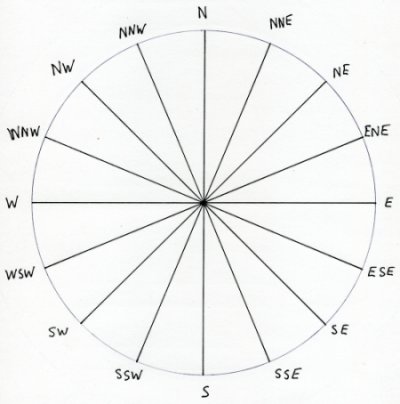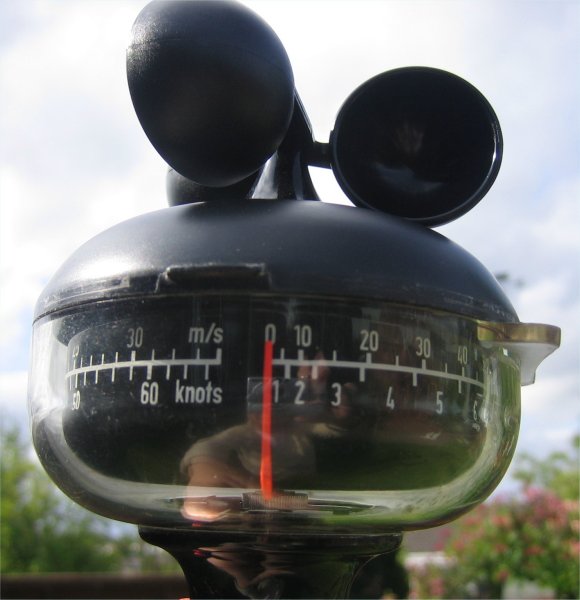More About Wind Measurements
The wind is in fact air moving horizontally from one place to another. It is air moving from an area of high pressure to an area of low pressure. The greater the difference in air pressure, the quicker the air will move. Local winds can be cause by the difference in temperature of the land and sea. When hot air rises, the air moving in to take its place can form a coastal breeze.
There are many different instruments for measuring wind speed. Some more are shown on this page.
When you have finished reading about this you may want to return to the Wind Measurements page, find out how to put your data to use on the Wind Roses and Wind Direction page or return to Collecting Data. You may also like to have a go at the Wind Direction Quiz.
Wind StrengthAs well as estimating how strongly the wind is blowing by using the description in the Beaufort Scale, a device called an anemometer can be used. This video clip shows how three cups are blown round by the wind. The speed at which the cups rotate shows how quickly the air is moving. This is a basic device which simply lights up different coloured bulbs for different speeds. Most devices will give readings in more than one measurement. |
[No speech] |
Different Units for Wind MeasurementThe Beaufort Scale is used to estimate wind strength because often an anemometer is not available. Anemometers are devices, generally with three cups which spin, which can measure the wind speed more accurately. They have scales on them marked in a variety of units. These can include km/h (kilometres per hour), m/s (Metres per second), knots (often used at sea) and also the Beaufort Scale. The anemometer on the right has km/h and Beaufort on one side and m/s and knots on the other side. On this anemometer there is a red button which can be pressed to hold the needle at the current reading. The anemometer can then be lowered so that it can be read easily. |
|
Gusts and Average Wind SpeedWhen measuring the wind strength there are two measurements to consider. Watch the instrument for a little while. At least 2 periods of 15 seconds is suggested. If the two readings are fairly similar take the average from them. If the readings are very different it may be wise to take a third reading. Some instruments are able to record the gusts. These are the stronger short bursts of wind. It can be interesting to measure these. The dialled device on the More ICT page leaves a pointer at the point of the highest wind reading. This can be reset daily. Some instruments can also work out the average wind speed for you. The instrument on the right can do this. It can also be used to record the highest gust. This environment meter has a cover which can be opened when the wind is going to be measured.
|
 |
Using ICTLots of the digital weather stations can record different readings for the wind, including strength and direction. They also often have software which can graph the data. |
|
Wind DirectionAs stated on the Wind Measurements Page, the eight points of the compass can be used to record where the wind is coming from. If you want to be more accurate, sixteen points of the compass can be used. See the sixteen points of the compass in this larger format. |
 |


